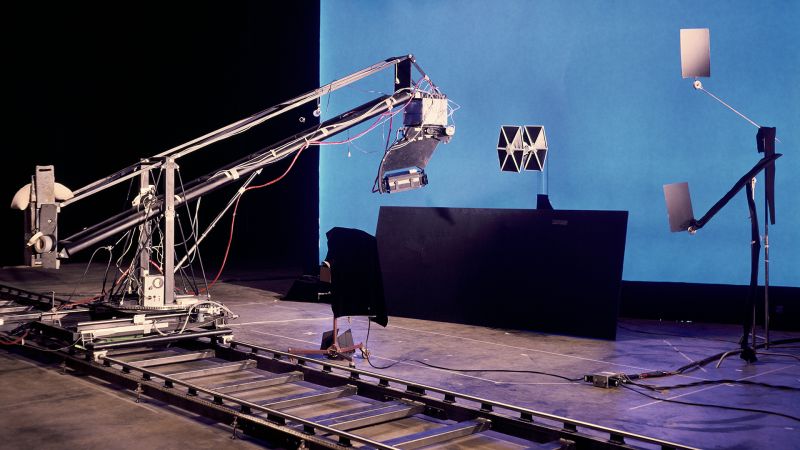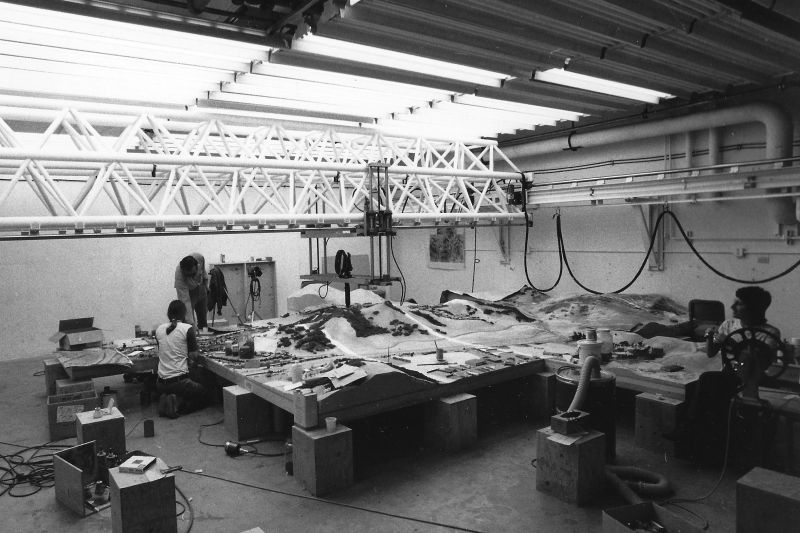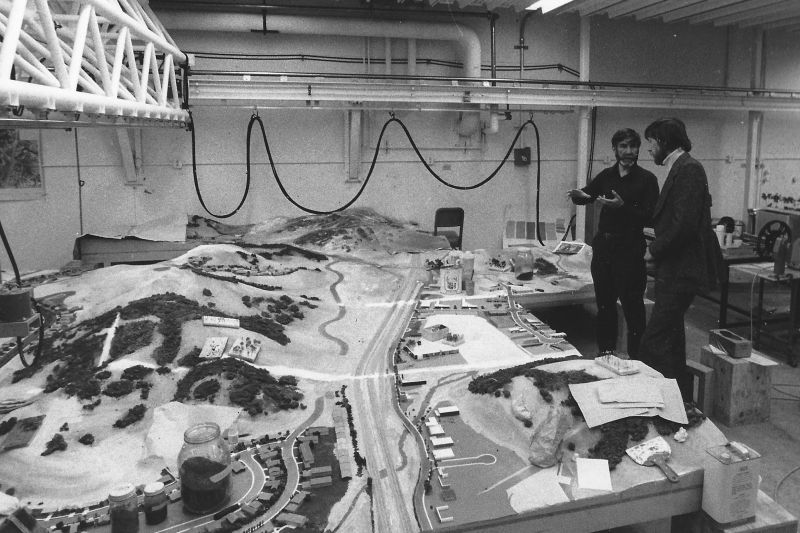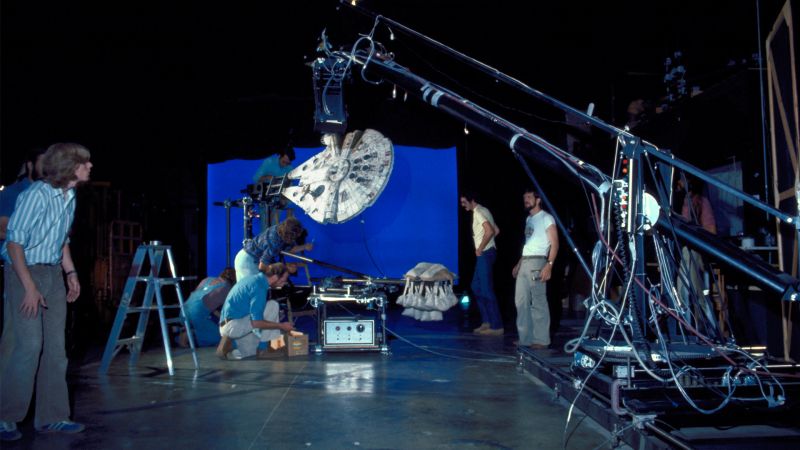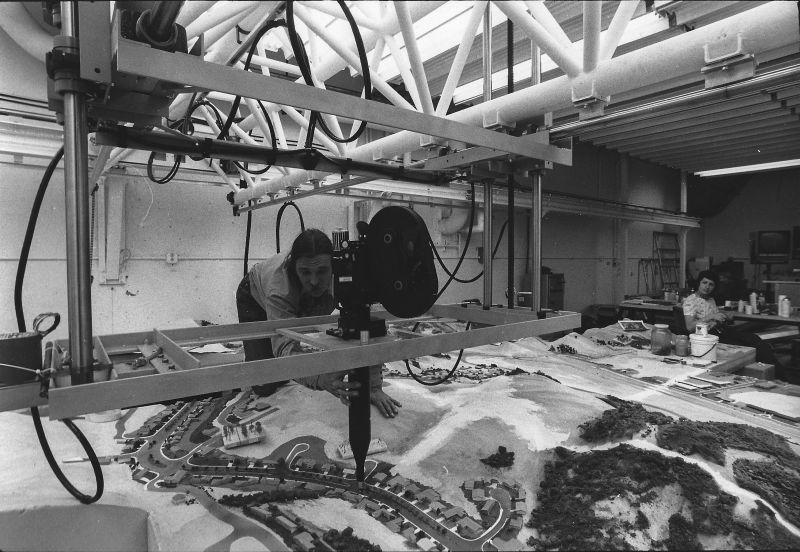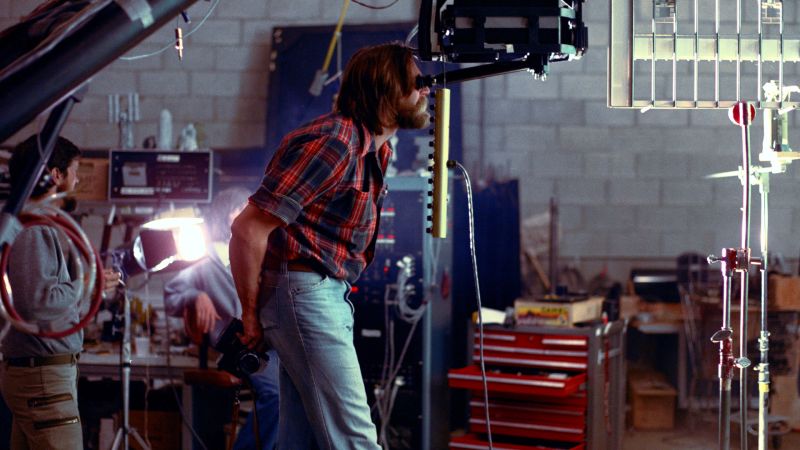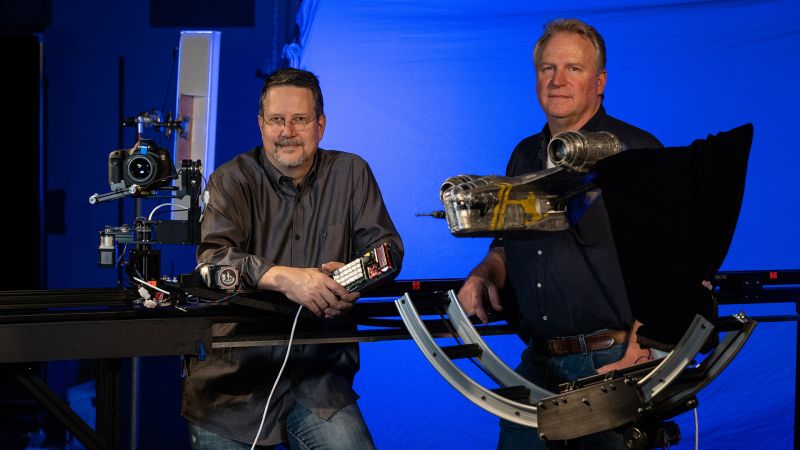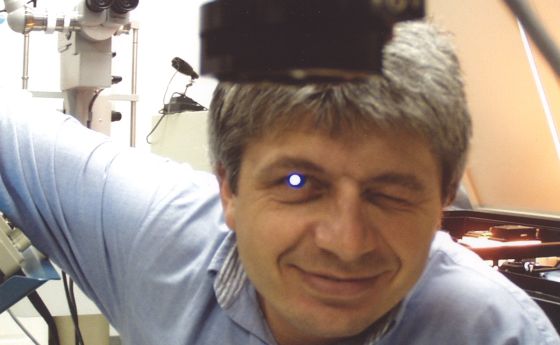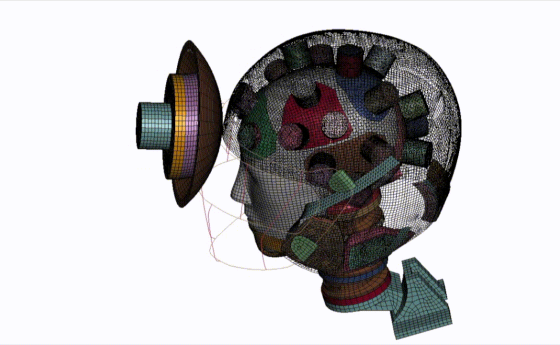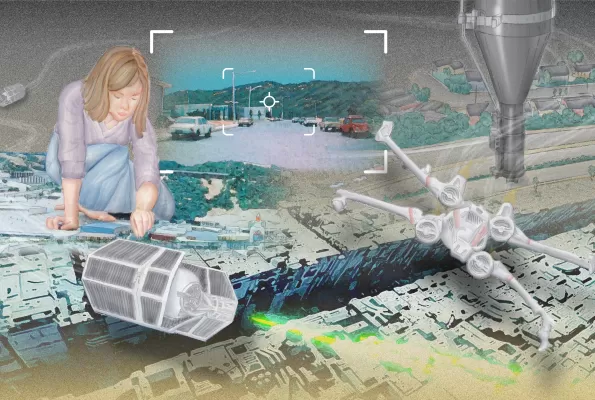
The 1970s psychology experiment behind 'Star Wars' special effects
Creating realistic simulations of neighborhoods using miniatures and computer-controlled cameras was the goal of an ambitious experiment designed by two NSF-funded researchers. What they didn't know was that their lab's research would influence how special effects are made in some of the most memorable movies and TV shows in history, from the first "Star Wars" movie to "The Mandalorian."
With mouths agape, movie audiences for more than 40 years have watched a certain outgunned rebel spaceship's futile attempt to flee a ginormous imperial star destroyer. That iconic opening shot of 1977's "Star Wars" is seared into the collective memory of millions, if not billions, of people. It was, of course, an elaborate fake — constructed and photographed by skilled artists in a humble warehouse outside Los Angeles. Far, far away from the Galactic Empire.
That scene and many others were created for the first "Star Wars" movie by Industrial Light & Magic, George Lucas' then-fledgling special effects company. The staff of ILM ignited a revolution in filmmaking aesthetics. They combined technology and artistry with a keen understanding of the fundamentals of human perception. That innovative fusion was based on experimental techniques first tested in a research project at the University of California, Berkeley and supported by the U.S. National Science Foundation.
"The focus of the project required that I figure out, in a scientific way, the things that made the image believable," says John Dykstra, who worked on the experiment in Berkeley's Environmental Simulation Laboratory in the 1970s along with Jerry Jeffress and Alvah Miller. A few years later, all three would become founding members of ILM, where they would expand on the work at Berkeley to create a computer-controlled camera system capable of movie-quality special effects — the eponymous "Dykstraflex" system which was first used for "Star Wars."
The research and technological innovations achieved in the Berkeley lab provided a new understanding of how people respond to what they see — be it real or on celluloid — and how that understanding could be applied. In the process, Dykstra and others in the lab prototyped some of the techniques and equipment that the inventive team at ILM would later use to draw audiences into a perceptually believable fantasy with dogfighting TIE fighters and trench-running X-wings.
"The one that blew everyone away was that very first shot in Star Wars with this ship that looks like it's a mile long, flying overhead," remembers ILM Executive Creative Director John Knoll of his reaction when he first saw "Star Wars" as a boy.
"And to discover that it's a 3-foot-long model? It's just, how did they do it?"
A new hope... for public planning
Donald Appleyard was a professor of urban design at UC Berkeley with a passion for how streets, neighborhoods and entire cities can be designed to maximize the quality of life and safety of their residents. In the early 1970s he partnered with his friend, Berkeley psychologist Kenneth Craik, and together they helped establish the new field of environmental psychology, which investigates how people are affected by their surrounding environment, from busy streets to peaceful parks.
In 1970, then-President Richard Nixon signed the "National Environmental Policy Act" into law, which required federal agencies to start taking into account the environmental impacts of construction projects, like highways. The purpose of the law was to prevent environmental damage and to "stimulate the health and welfare of man."
The new law spurred Appleyard and Craik to tackle a thorny issue in the planning and development of public works, says urban designer Peter Bosselmann, who worked with Appleyard and Craik in UC Berkeley's Environmental Simulation Laboratory and later led the lab after Appleyard's death in 1982.
The problem was that simulations of construction projects, like static models and drawings, don't always accurately convey how the project will ultimately be perceived by the people who might eventually inhabit them or live nearby.
"Drawings and perspectives are necessarily selective, and planners choose the viewpoints and features that best communicate their ideas of what the project ought to be like," wrote Appleyard in 1977 in Berkeley Environmental Simulation Laboratory: A Tool for Transportation. "At best, there is a rich mixture of hope in these presentations; at worst there is downright deception."
Appleyard and Craik had an idea for what to do about that: create better, more life-like simulations. "If simulation can bring these projects closer to the real world, the public may have a clearer idea of whether they are desirable or monstrous," wrote Appleyard.
Certain optical techniques were already known to have the ability to convince our brains that small objects are large (and vice versa) or that objects are moving in a way that they aren't. Films pre-dating "Star Wars," like "2001: A Space Odyssey" and "Silent Running," used detailed scale models to create convincing illusions of great size and movement.
Appleyard and Craik wanted to build on those techniques, but not for the purpose of storytelling. Their ambition was to bring scientific rigor to public planning simulations, which hinged on an unanswered research question: Can a simulated environment generate psychological reactions similar or even identical to the real thing?
Finding the answer would require a carefully designed experiment, building a new type of camera rig and hiring experts in electronics, computers, optics and modelmaking — all of which required funding. Enter NSF, which awarded a research grant to Appleyard and Craik in 1972 to conduct their experiment. With federal funding secured, they got to work assembling a team that could create an apparatus capable of yielding rigorous scientific data. Ironically, the rare blend of skills they needed could only be found in the world of science fiction.
Specifically, Hollywood.
A certain level of believability
"I had this weird potpourri of stuff that I knew how to do and that particular combination of stuff was ideal for what they needed," says Dykstra.
In the early 1970s, Dykstra was working with Hollywood special effects legend Douglas Trumbull, who a few years earlier had partnered with Stanley Kubrick to create the groundbreaking visual effects in "2001: A Space Odyssey."
"I designed models, built models, photographed models," recalls Dykstra of the filmmaking work he was doing around the time he became involved with the Berkeley lab's experiment. A member of the lab's staff contacted him and not long afterward he found himself filming a model that was considerably more down to Earth.
The model was a highly detailed reproduction of a 1.5 x 1 mile suburban area north of San Francisco in Marin County. More than 20 feet wide in total, each inch of the model painstakingly represented 30 feet of Marin County streets and terrain, complete with tiny cars, houses and gas stations, trees, shrubs and even miniature traffic lights. Positioned above the model was a moving gantry with a 16 mm film camera and a complex periscope-like optical system designed by U.C. Berkeley engineer Karl Mellander. The periscope skimmed over the miniature streets to provide an "eye level" view of the model equivalent to what a person driving a car would see.
A key innovation of the system was that the motion of the camera rig as it "drove" through the streets of the miniature landscape was controlled entirely by a computer. The lab used an (at the time) state-of-the-art PDP-11 mainframe computer the size of several commercial refrigerators, says Dykstra. The computer allowed a particular route to be precisely repeated as many times as the team deemed necessary.
"A repeatable basis was important because you needed to program the move to figure out what you wanted to do, photograph it to make sure that you liked it and then put in all of the accoutrements that made for the reality of it and then photograph it again," says Dykstra.
"That has applications in visual effects because you're shooting multiple elements that are combined at a later date to appear as though they were all photographed at the same time," he says. Those computer-based techniques that enabled precise, repeatable camera movements would soon leap from a leisurely drive through Marin County to swooping over the surface of the Death Star.
The innovative Dykstraflex camera system created at ILM brought dynamic motion to movie special effects which, at the time, required all the constituent elements of a particular shot — like each miniature spaceship model, the surface of the Death Star and the starfield in the background — to be photographed separately onto different pieces of film and then optically combined later into a single piece of film. The complicated process, with many intermediate mattes, only works if the camera's preprogrammed path remains exactly the same as it photographs each element.
While the Berkeley camera system and its more advanced descendant, the Dykstraflex, were both impressive technological breakthroughs, the underlying scientific question remained: Would people react to a simulated environment as though it was real?
"That's what the real test for this system was," says Dykstra of the original Berkeley rig. "You had to reach a certain level of believability, otherwise the whole thing falls apart."
For the Berkeley lab, it was showtime.
How do you measure reality?
"'Real' is an interesting concept," says Bosselmann of the philosophical pitfalls awaiting those who attempt to determine whether something is real or not.
To assess the perceived "reality" of their simulation, Donald Appleyard and Kenneth Craik concentrated on the measurable and statistics-friendly concept of "response equivalence." The term was coined by Craik, explains Bosselmann, and describes a psychological concept used to assess the validity of a simulated environment. "The imagery produced in the laboratory should evoke similar — ideally identical — comments from viewers that could be compared to comments from viewers of the real world," he says.
They recruited more than 800 people to participate in the experiment, carefully selected to include a broad range of occupations and both people who were familiar with Marin County and those who weren't. Each participant was randomly selected to have one of four experiences: 1) actually driving through the Marin County neighborhood as a passenger in a car, 2) viewing a color film that was photographed from a car driving through the actual neighborhood, 3) viewing the computer-controlled color film made of the miniature model in the lab, or 4) viewing a black and white video version of the same film.
Craik and other psychologists then asked each participant three hours' worth of questions that tested their recall and perception of what they experienced. The responses were analyzed across the four different experiences and compared based on other factors such as a participant's occupation and level of familiarity with Marin County.
"These results will confirm the experience of anyone who has viewed our films," predicted Appleyard in 1977. "The films are not abstract, schematic, or like cartoons that are simulated by computers. The films are sufficiently real that many viewers refuse to believe that models were used."
Subsequent analysis of the results revealed more nuance, however. "It succeeded partially, with qualifications," says Bosselmann. "If you were not familiar with the area that is portrayed there was much equivalence," he says. But participants who were already familiar with the area answered Craik's questions with their previous experiences in mind, he explains.
The simulation technique was most broadly effective when it simulated something never before seen by the viewers, like proposed structures which did not yet exist. That discovery was highly useful for those wanting to accurately simulate urban designs for the purposes of gathering community input and decision making.
The insight would also be put to good use by ILM and others in the special effects industry in dozens of films and television shows over the next two decades.
The Dykstraflex created a revolution in filmmaking aesthetics beginning with "Star Wars," says David Vanden Bossche, a doctoral candidate at the University of Wisconsin-Madison's communications department who studies the influence of technological innovation on the film industry.
"It also had an enormous influence later on, on all these films that became part of early 80s pop culture," he says, like the "Indiana Jones" films, the "Star Trek" films, "Back to the Future" and many others. By the mid-1980s, computer-controlled film cameras had become a fairly commonplace tool within the film and television industry and became known generically as "motion control systems."
"It was profound," says John Knoll of the impact that the Dykstraflex system had on filmmaking. "Prior to motion control systems, you could usually spot visual effects shots in movies because they had limited or no camera motion. You'd have a movie with dolly shots and crane moves and hand-held camera work, then suddenly there'd be this locked-off shot and you'd kind of know a visual effect was coming."
But time and technology march on. Motion control systems would eventually be supplanted in the 1990s as more and more filmmakers turned to computer-generated effects, which did not require physical models or multiple elements to be photographed on film. Dykstra himself was part of the team that won 2004's visual effects Academy Award for the computer-generated effects in "Spider-Man 2."
This is the way
"I was 14 years old when 'Star Wars' came out," remembers John Knoll, ILM's executive creative director and creator of visual effects for dozens of films and shows from "The Abyss" to "The Mandalorian." As a longtime ILM employee and co-inventor of Photoshop (along with Thomas Knoll, his brother) he's been at the vanguard of the digital revolution that largely replaced physical models. Despite that, he remains a stalwart fan of miniature models and the mechanical systems needed to shoot them.
"There's definitely a love of some of the older techniques, just purely from a nostalgic point of view," says Knoll. "I still think miniatures are really cool. They look great if you shoot them properly."
Physical miniatures and motion control would make an unlikely return to the world of "Star Wars" in the chronicles of bounty hunter Din Djarin in "The Mandalorian." During production of the show's first season, executive producer Jon Favreau questioned the realism of computer-generated shots of Djarin's shiny metallic ship, the Razor Crest. "He was looking at them a little skeptically, saying 'Would the glints on the surface be brighter than that? I don't know. Seems like we should build a reference model'," recalls Knoll.
Echoing Appleyard and Craik's efforts to validate a simulation through comparison with reality, Knoll and his team went old-school and created a miniature Razor Crest model. With the effects budget for the show already finalized, Knoll adopted a DIY-approach and built a cinema-quality motion control system on the cheap in his garage at home. They went beyond validation of the computer model and ended up using his home-brew rig and the model for many of the Razor Crest's scenes that appear in the series.
The success of the miniature-based work on "The Mandalorian" is fueling a sort of resurgence of motion control at ILM. Knoll has constructed a new and more elaborate rig which will be used on upcoming shows and is training a new generation of effects artists on how to use it. "If I get hit by a bus, it won't end with me," he laughs. "I'm hoping to keep this going into the future."
As for the OG motion control systems, both are now museum pieces. The Dykstraflex was donated by George Lucas in 2008 to the Academy of Motion Picture Arts and Sciences (where Knoll helped lead its re-assembly and restoration) and Bosselmann donated the Berkeley rig to the San Francisco Museum of Modern Art.
The legacy of UC Berkeley's Environmental Simulation Lab lives on through its published findings in various academic journals and its influence on urban development projects around the world. It also stands as a key innovation behind movie memories that are now an indelible part of American culture and history.
In a strangely prophetic sentence about the possible applications of his lab's environmental simulation research, Appleyard wrote in 1977 that " ... future environments that are quite different from any that exist are being conceived in laboratories, on drawing boards, and in imaginative minds around the world." Imaginative minds indeed — impelled in no small part by the very real force of scientific exploration.
That force will be with you, science fans. Always.



